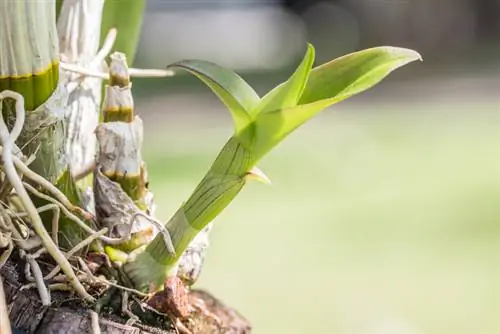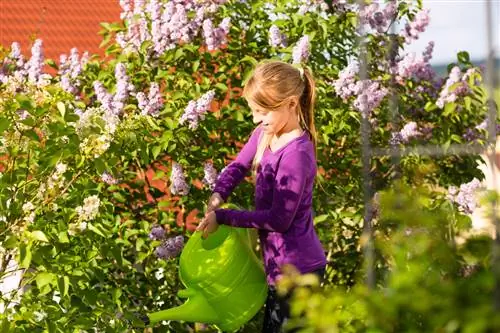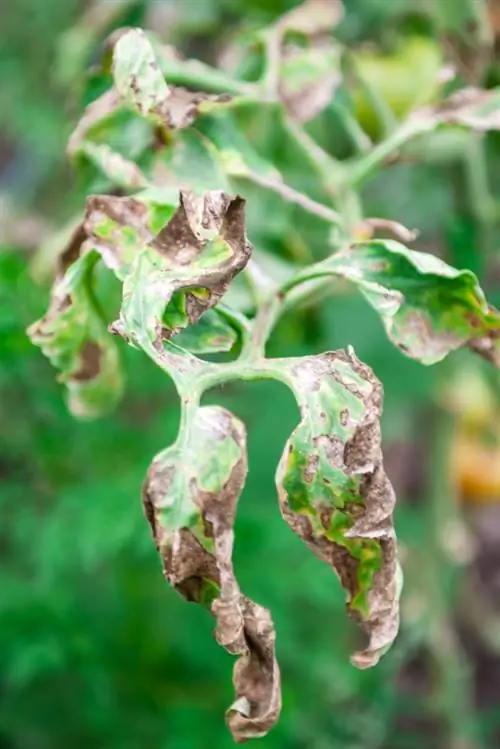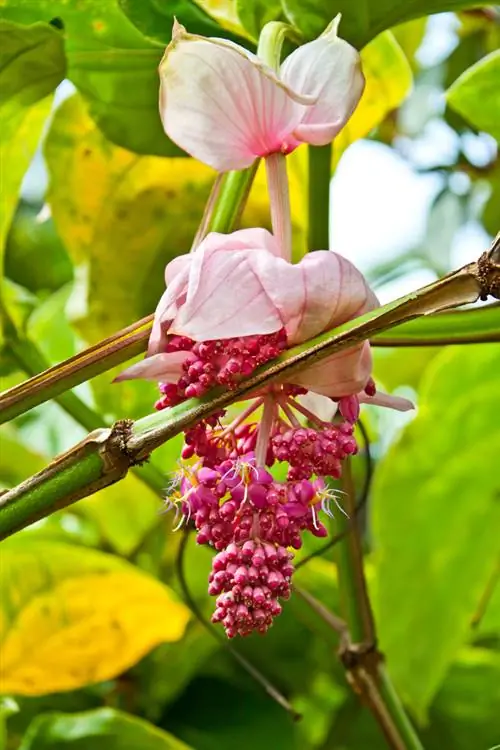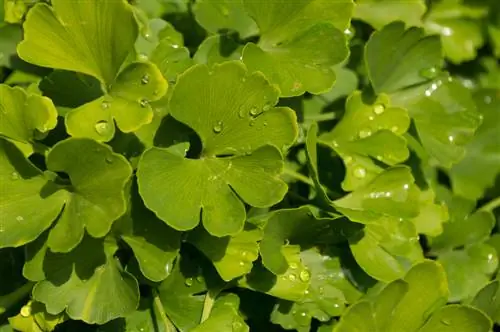- Author admin [email protected].
- Public 2023-12-16 16:46.
- Last modified 2025-01-23 11:20.
It is a phenomenon that amazes us. New leaves sprout on the stem or pseudobulb of an orchid where flowers should actually develop. Read here what strategy the plant is pursuing. This is how you benefit from the natural event.
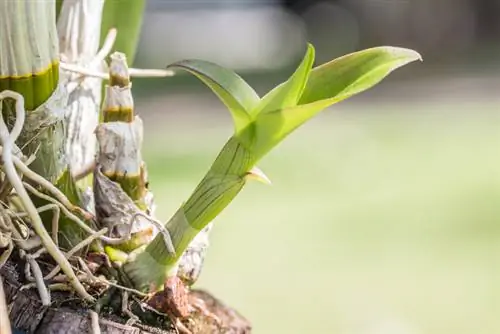
Why do new leaves sprout on the orchid?
New leaves on an orchid, also called kindel or keiki, are an unorthodox propagation strategy of the plant. They emerge from the stem or pseudobulb and over time develop additional aerial roots to establish themselves as separate daughter plants.
An unorthodox propagation strategy
With their epiphytic growth, Phalaenopsis, Epidendrum and Dendrobium are out of the ordinary. In their homeland, the flowers sit on the branches of jungle giants, where they cling to them with their roots. Since there is little space here to produce offshoots and offspring, the clever orchids have developed this ingenious strategy:
- As you get older, new leaves sprout on the stem or flower stem
- Over the next few months, additional aerial roots will form underneath the leaves
The new leaves are therefore daughter plants - also known as Kindel or Keiki.
Tips for caring for Kindel on the flower stem
In the first few months, an orchid child is not viable without the connection to the mother plant. As new leaves and aerial roots continue to form, spray the offshoot regularly. If necessary, support the flower stem with a stick to prevent the additional weight from breaking it.
Only when an offshoot has at least 2 leaves and 2-3 aerial roots can it be separated from the mother. To do this, cut off the Kindel (€12.00 on Amazon) with a clean knife. Fill a transparent culture pot with fine-grained orchid substrate for young plants over expanded clay drainage. Plant the daughter plant in it and water it.
High humidity activates growth
In view of the small leaf volume and the sparse aerial roots, the offshoot depends on high humidity in the first few months. Therefore, place the growing pot in a mini greenhouse. Alternatively, place a perforated plastic bag over the container and ventilate it several times a day.
Tip
If a Phalaenopsis produces basal new leaves but no flowers, the plant is gathering fresh energy for the growth of young flower stalks. Continue the care undiminished in the bright location with regular diving and fertilizing. Lowering temperatures by 5 degrees Celsius below normal levels contributes to flower induction.

